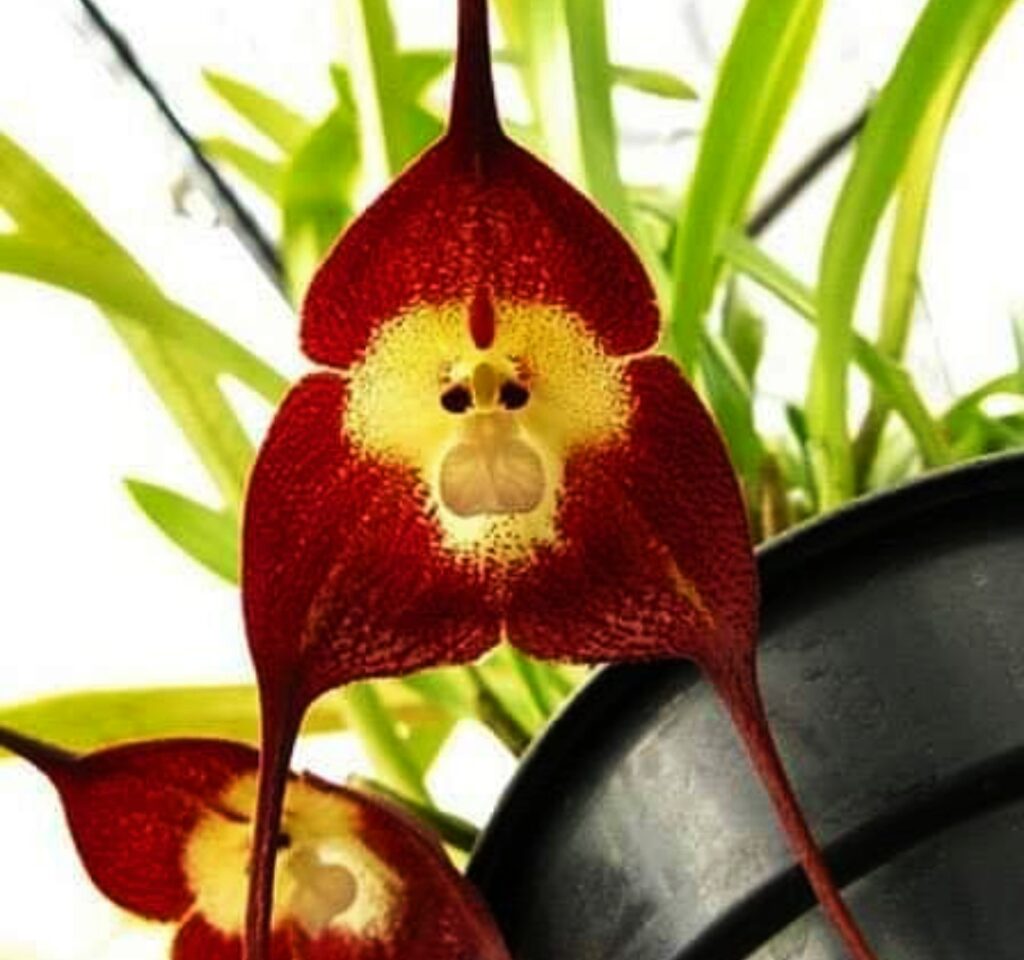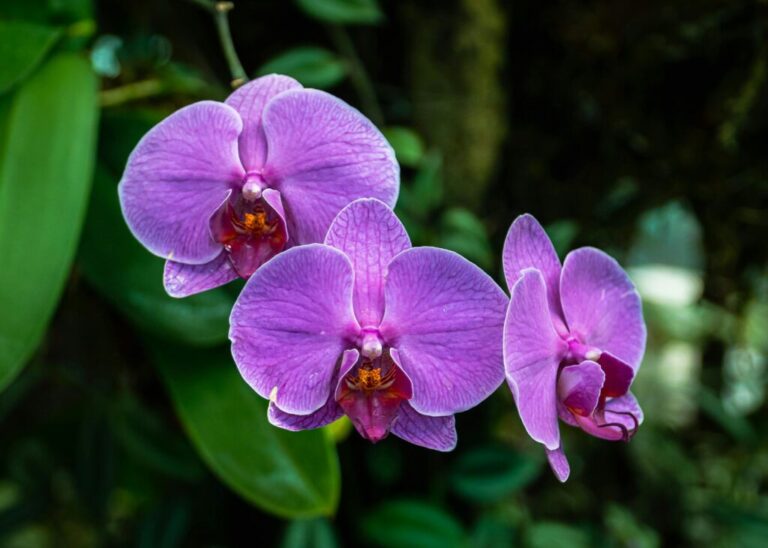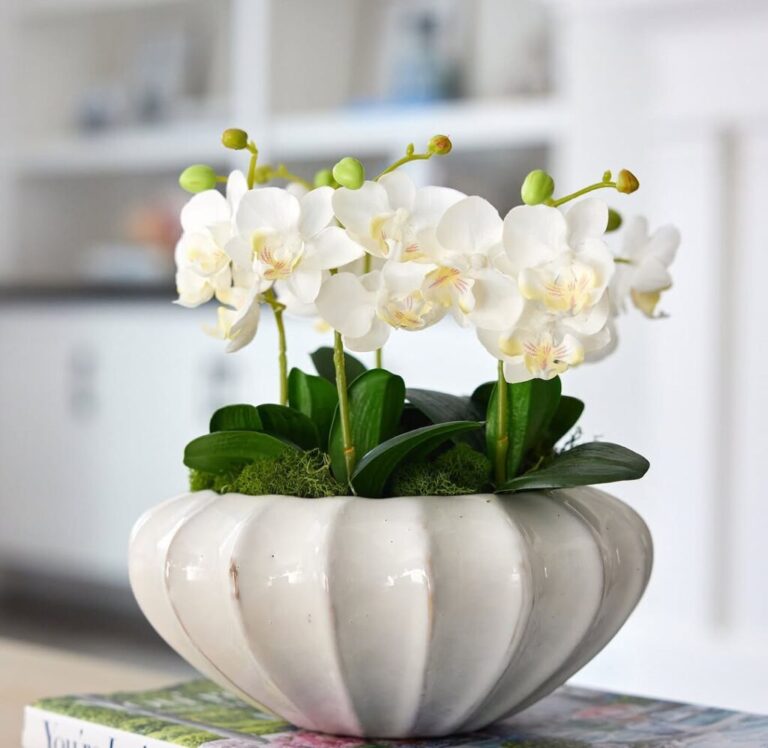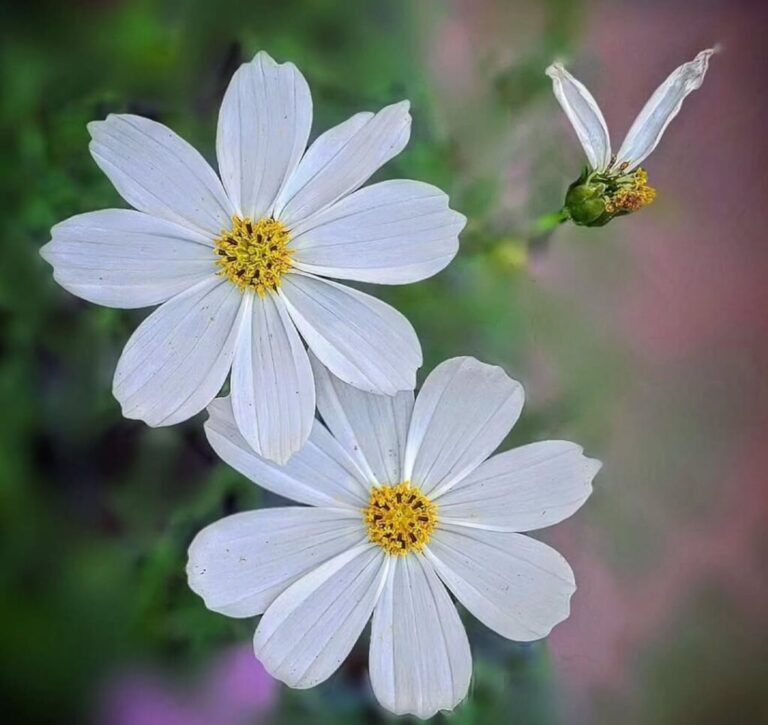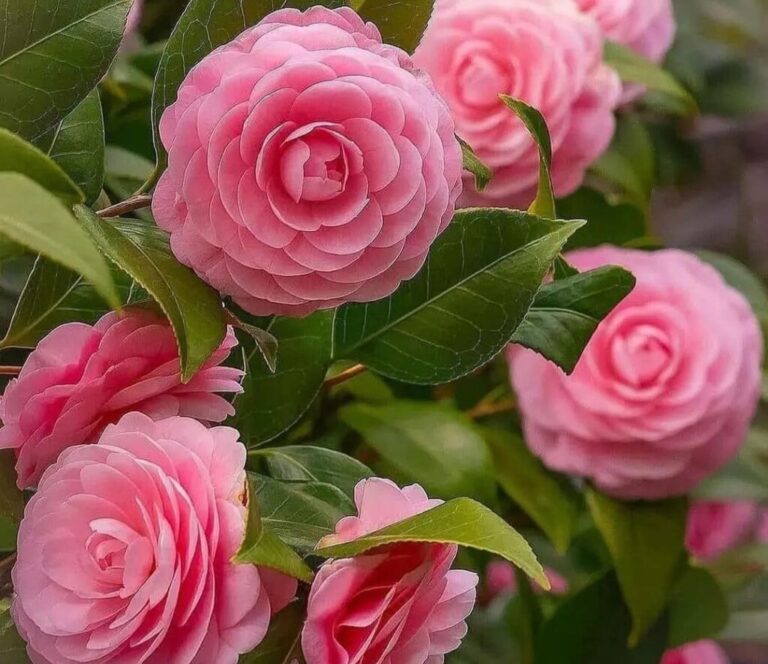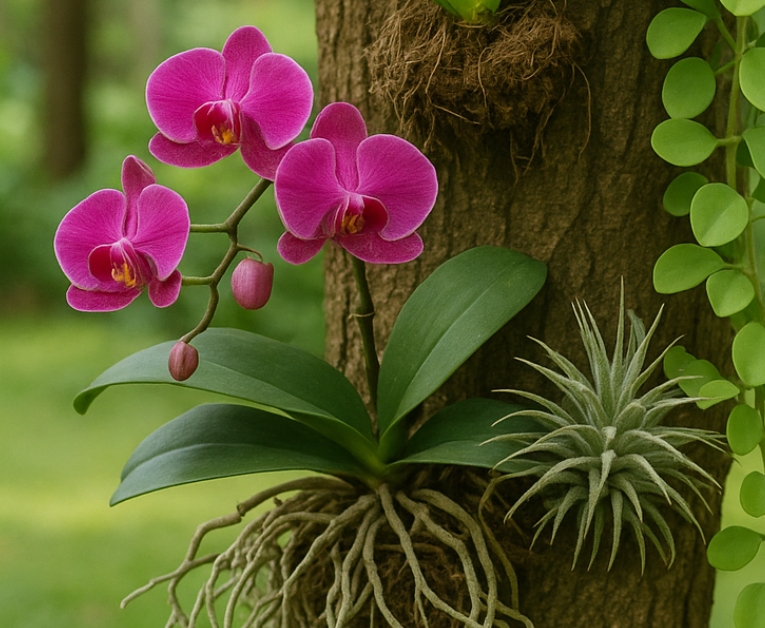If you’ve ever come across a flower that seems to have a little monkey peeking out from its petals, then you’ve discovered the one-of-a-kind Monkey Face Orchid (Dracula simia). This rare orchid, native to the misty cloud forests of South America, is unlike anything else in the plant world. With its charming monkey-like blooms,
it’s captured the hearts of collectors and curious gardeners alike. But before you bring this orchid home, it’s important to understand its needs—because while it’s adorable, it’s also a bit picky. Here are 10 expert tips, carefully crafted for beginners, to help you successfully grow and enjoy this unique beauty.
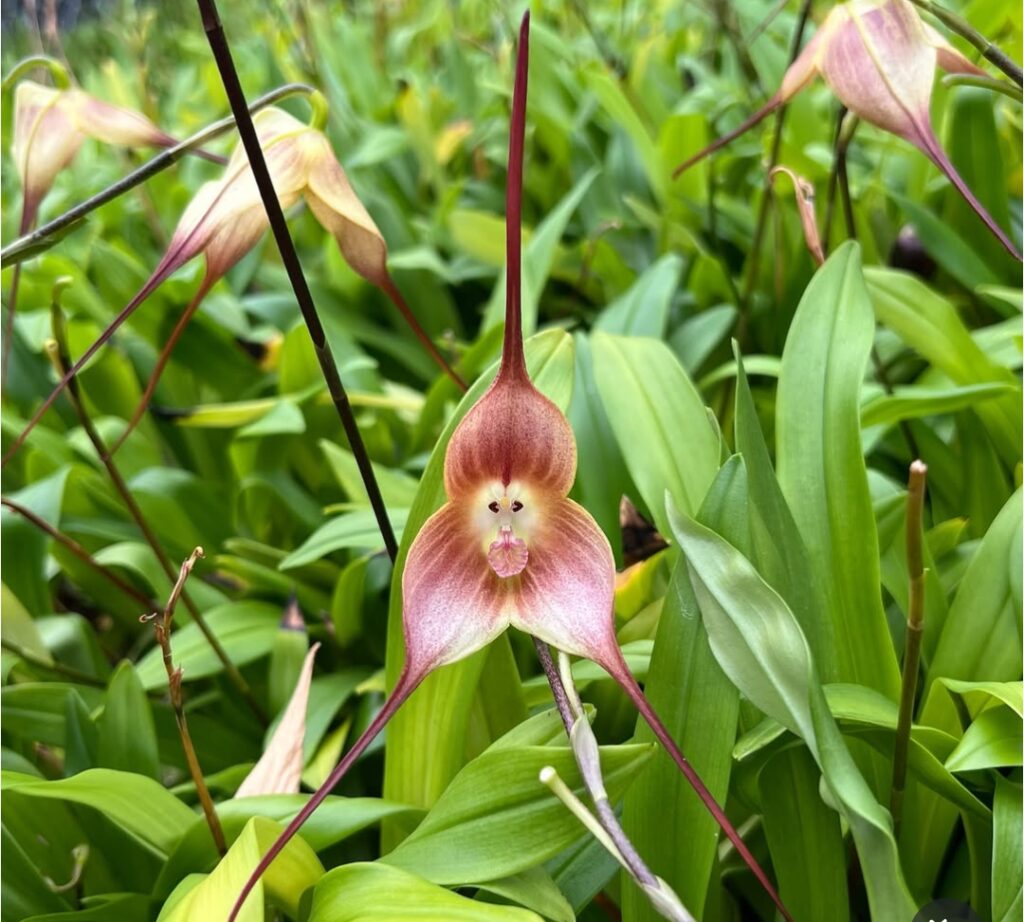
Monkey Face Orchid Care with essential tasks:
| Care Task | Frequency | Notes |
|---|---|---|
| Watering | Every 3–5 days | Keep soil moist but not soggy |
| Humidity | 70–80% daily | Use a humidifier or pebble tray |
| Temperature | 50–80°F (10–27°C) | Avoid sudden temperature drops |
| Light | Indirect, bright | Avoid direct sunlight |
| Fertilizing | Every 2 weeks | Use a balanced orchid fertilizer |
| Repotting | Every 2–3 years | Use a well-draining orchid mix |
| Pruning | As needed | Remove dead leaves and flowers |
| Pest Control | Monthly check | Watch for aphids, spider mites |
- 1 1. Choose the Right Environment
- 2 2. Humidity Is Key
- 3 3. Keep It Shady (Literally)
- 4 4. Use the Right Potting Mix
- 5 5. Watering: Less Is Not More
- 6 6. Avoid Tap Water If Possible
- 7 7. Gentle Airflow Prevents Rot
- 8 8. Fertilize Sparingly
- 9 9. Repot Every 1–2 Years
- 10 10. Patience Pays Off
- 11 My Personal Experience with the Monkey Face Orchid”
- 12 FAQS
1. Choose the Right Environment
The Monkey Face Orchid thrives in the cool, shady, and misty cloud forests of Ecuador and Peru. These orchids naturally grow at higher elevations where the air is fresh, cool, and constantly humid. To replicate this environment at home, place your plant in a cool room with consistent temperatures between 50–75°F (10–24°C). Avoid placing it near heat sources, vents, or in overly dry rooms.
Tip: Use a terrarium, greenhouse cabinet, or a shaded indoor spot with good ventilation to simulate its native climate.
2. Humidity Is Key
Humidity is absolutely vital for the Monkey Face Orchid’s survival. In the wild, it thrives in humidity levels reaching up to 100%, and anything below 70% can cause serious stress. Low humidity results in leaf browning, reduced blooming, and general poor health. This orchid simply cannot tolerate dry indoor air for extended periods.
Tip: Place a humidifier nearby, mist the leaves regularly, or set the pot on a pebble tray filled with water to keep moisture levels up.
3. Keep It Shady (Literally)
These orchids are shade lovers. In their natural habitat, they grow under the dense canopy of tall trees, where light filters softly through the leaves. Bright or direct light can scorch their foliage, leaving irreversible damage. They do best with low to medium indirect light.
Tip: Position your plant near an east-facing window with filtered light or use grow lights with diffusers to gently mimic dappled forest light.
4. Use the Right Potting Mix
The Monkey Face Orchid is epiphytic, meaning it grows on trees rather than in soil. This means traditional potting soil will suffocate its roots and cause rot. The roots need air and drainage to stay healthy, so a light, chunky mix is essential.
Tip: Use a custom blend of sphagnum moss, fine orchid bark, perlite, and a bit of charcoal to provide moisture retention while allowing airflow.
5. Watering: Less Is Not More
These orchids love consistent moisture and should never be left to dry out completely. However, they also despise soggy conditions. It’s all about balance. Letting the medium dry out too much will stress the plant, while too much water can rot the roots.
Tip: Water every 2–3 days in warmer seasons or when the top of the moss feels slightly dry. Adapt the frequency according to temperature and humidity.
6. Avoid Tap Water If Possible
Tap water often contains chlorine, fluoride, and minerals that can accumulate in the potting medium and harm the orchid’s delicate roots. Over time, these chemicals can lead to nutrient imbalances, leaf discoloration, and weak growth.
Tip: Stick with rainwater, distilled water, or filtered water to protect your plant. If you must use tap water, let it sit overnight to allow some chemicals to evaporate.
7. Gentle Airflow Prevents Rot
Good airflow helps prevent fungal infections and root rot, which this orchid is prone to if conditions are too stagnant. Still, you don’t want a direct breeze that dries out the plant quickly. Think of it like the gentle, moving air of a forest floor.
Tip: Use a small oscillating fan on low to keep the air fresh and moving, especially in enclosed spaces like grow cabinets or terrariums.
8. Fertilize Sparingly
Monkey Face Orchids do not require heavy feeding. In fact, too much fertilizer can do more harm than good by causing root burn or mineral buildup. Feeding should support growth without overwhelming the plant.
Tip: Fertilize only once a month during the growing season using a balanced orchid fertilizer diluted to ¼ strength. Avoid fertilizing in fall and winter when growth slows down.
9. Repot Every 1–2 Years
As time goes on, your orchid’s potting mix will start to decompose and compact, which reduces air circulation to the roots. Old media also holds too much moisture, increasing the risk of rot. Repotting keeps the plant healthy and encourages new root growth.
Tip: Repot your orchid every 12–24 months, preferably in spring or after blooming, using fresh orchid mix and a breathable, shallow container or basket.
Monkey Face Orchid Year-Round Care Timetable
| Task | Spring | Summer | Fall | Winter |
|---|---|---|---|---|
| Watering | Every 3–5 days | Every 2–4 days | Every 5–7 days | Every 7–10 days |
| Humidity | 70–80% | 70–80% | 60–70% | 60–70% (use a humidifier) |
| Light | Bright, indirect | Bright, indirect | Moderate light | Lower light, avoid drafts |
| Temperature | 55–75°F (13–24°C) | 60–80°F (16–27°C) | 50–70°F (10–21°C) | 45–65°F (7–18°C) |
| Fertilizing | Every 2 weeks (balanced fertilizer) | Every 2 weeks | Monthly (reduce feeding) | Stop or minimal feeding |
| Repotting | Best time for repotting | Only if necessary | Avoid repotting | Avoid repotting |
| Pruning | Remove dead leaves | Trim old blooms | Light pruning | Minimal pruning |
| Pest Control | Monthly check | Watch for spider mites | Check for fungus gnats | Monitor for pests indoors |
10. Patience Pays Off
Monkey Face Orchids are slow to bloom, especially if grown from young plants or seed. It may take a few years of proper care before you see their famous monkey-like flowers. Don’t be discouraged if blooms don’t appear right away—good things take time.
Tip: Keep providing the right environment, and eventually, your patience will be rewarded with blooms that are as charming as they are bizarre.
My Personal Experience with the Monkey Face Orchid”
When I first got my Monkey Face Orchid (Dracula simia), I was both excited and intimidated. Its delicate, almost mystical flowers—resembling tiny monkey faces—felt like a rare treasure. At first, I struggled with humidity levels, as my home was drier than their natural cloud forest habitat. I tried misting, but it wasn’t enough.
Eventually, I placed the plant near a small humidifier and within weeks, I noticed healthier leaves and a new bud forming. The moment it bloomed, revealing that playful, eerie little face, I knew all the patience and adjustments were worth it. Growing a Monkey Face Orchid is a journey of learning, but once you get the environment right, it rewards you with some of the most fascinating blooms in the orchid world.
The Monkey Face Orchid may not be the easiest plant to grow, but for those willing to meet its needs, it offers one of the most fascinating floral displays in nature. Its combination of quirky character, delicate beauty, and mysterious aura makes it a rewarding plant for orchid lovers and adventurous beginners. With a little effort and a lot of patience, you’ll have a rare gem that sparks joy and conversation.happy gardening.
FAQS
What is the best temperature for Monkey Face Orchid care?
Monkey Face Orchid care requires maintaining temperatures between 50-77°F (10-25°C). These orchids thrive in cool to moderate conditions, so avoid placing them in areas with extreme heat or cold. Sudden temperature fluctuations can stress the plant, affecting its growth and blooming cycle. Keeping a stable environment ensures healthier growth and longevity.
Do Monkey Face Orchids need humidity?
Yes, high humidity is a crucial factor in Monkey Face Orchid care. These orchids prefer humidity levels between 50-70%, mimicking their natural cloud forest habitat. If the air is too dry, use a humidity tray, mist the leaves occasionally, or place a humidifier nearby to maintain an optimal environment for growth and flowering
What is the best potting mix for Monkey Face Orchid care?
A well-draining potting mix is essential for Monkey Face Orchid care. A blend of orchid bark, sphagnum moss, and perlite ensures proper aeration and moisture retention. This prevents root rot while allowing the roots to breathe. Avoid standard soil, as it retains too much moisture and suffocates the delicate orchid roots.
How can I prevent pests in Monkey Face Orchid care?
To ensure proper Monkey Face Orchid care, regularly inspect the plant for pests such as spider mites, aphids, and mealybugs. If you notice any infestations, use neem oil or insecticidal soap to control them. Keeping the leaves clean and maintaining good air circulation helps prevent common pest problems and fungal infections.
Can I grow Monkey Face Orchid indoors?
Yes, Monkey Face Orchid care can be successfully managed indoors with proper light, humidity, and air circulation. These orchids do well near bright windows but may require a humidifier in dry environments. Avoid placing them near heaters, air conditioners, or drafty windows, as sudden temperature changes can negatively affect their health.
How long does it take for a Monkey Face Orchid to bloom?
With proper Monkey Face Orchid care, these orchids typically bloom within 2-3 years from seed. However, if purchased as a mature plant, it may bloom within a few months. Providing consistent light, balanced watering, and appropriate fertilization encourages flowering. If your plant isn’t blooming, check its growing conditions and make necessary adjustments.
What are common Monkey Face Orchid care mistakes?
Common Monkey Face Orchid care mistakes include overwatering, insufficient humidity, and poor lighting. Many beginners also use the wrong potting mix or fail to provide adequate air circulation. Avoid these mistakes by closely monitoring your orchid’s needs and adjusting its care routine accordingly. A well-maintained orchid will thrive and bloom more frequently.
Should I repot my Monkey Face Orchid?
Repotting is an important step in Monkey Face Orchid care. It should be done every 2-3 years or when the potting mix starts breaking down. Use a fresh orchid mix to prevent root rot and improve aeration. When repotting, gently remove dead roots and transfer the orchid into a slightly larger pot if needed.
How do I propagate a Monkey Face Orchid?
Monkey Face Orchid care includes propagation by division. Mature plants develop multiple growths, which can be separated carefully and repotted. Ensure each division has healthy roots before transplanting. Propagation should be done in spring, allowing the plant to recover and establish itself in fresh potting mix before the next growing season.
Why is my Monkey Face Orchid not blooming?
If your Monkey Face Orchid care routine is correct but it’s still not blooming, check if it’s receiving enough light and nutrients. Inconsistent watering, low humidity, and lack of seasonal temperature drops can also impact flowering. Adjusting these factors and providing a proper rest period can encourage beautiful blooms.
